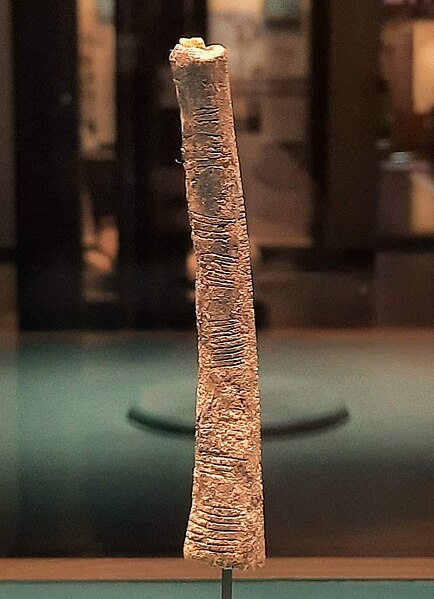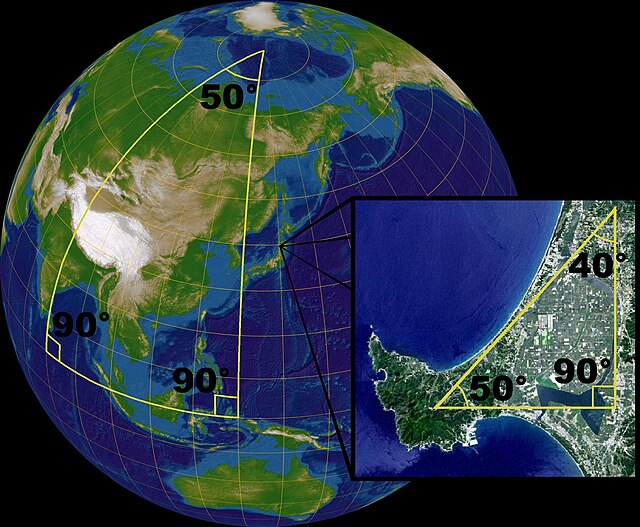In mathematics, the natural numbers are the numbers 0, 1, 2, 3, etc., possibly excluding 0.[under discussion] Some define the natural numbers as the non-negative integers 0, 1, 2, 3, ..., while others define them as the positive integers 1, 2, 3, .... Some authors acknowledge both definitions whenever convenient. Some texts define the whole numbers as the natural numbers together with zero, excluding zero from the natural numbers, while in other writings, the whole numbers refer to all of the integers. The counting numbers refer to the natural numbers in common language, particularly in primary school education, and are similarly ambiguous although typically exclude zero.
The Ishango bone (on exhibition at the Royal Belgian Institute of Natural Sciences) is believed to have been used 20,000 years ago for natural number arithmetic.
Mathematics is an area of knowledge that includes the topics of numbers, formulas and related structures, shapes and the spaces in which they are contained, and quantities and their changes. These topics are represented in modern mathematics with the major subdisciplines of number theory, algebra, geometry, and analysis, respectively. There is no general consensus among mathematicians about a common definition for their academic discipline.
This is the Ulam spiral, which illustrates the distribution of prime numbers. The dark diagonal lines in the spiral hint at the hypothesized approximate independence between being prime and being a value of a quadratic polynomial, a conjecture now known as Hardy and Littlewood's Conjecture F.
On the surface of a sphere, Euclidean geometry only applies as a local approximation. For larger scales the sum of the angles of a triangle is not equal to 180°.
The Babylonian mathematical tablet Plimpton 322, dated to 1800 BC
A page from al-Khwārizmī's Algebra





